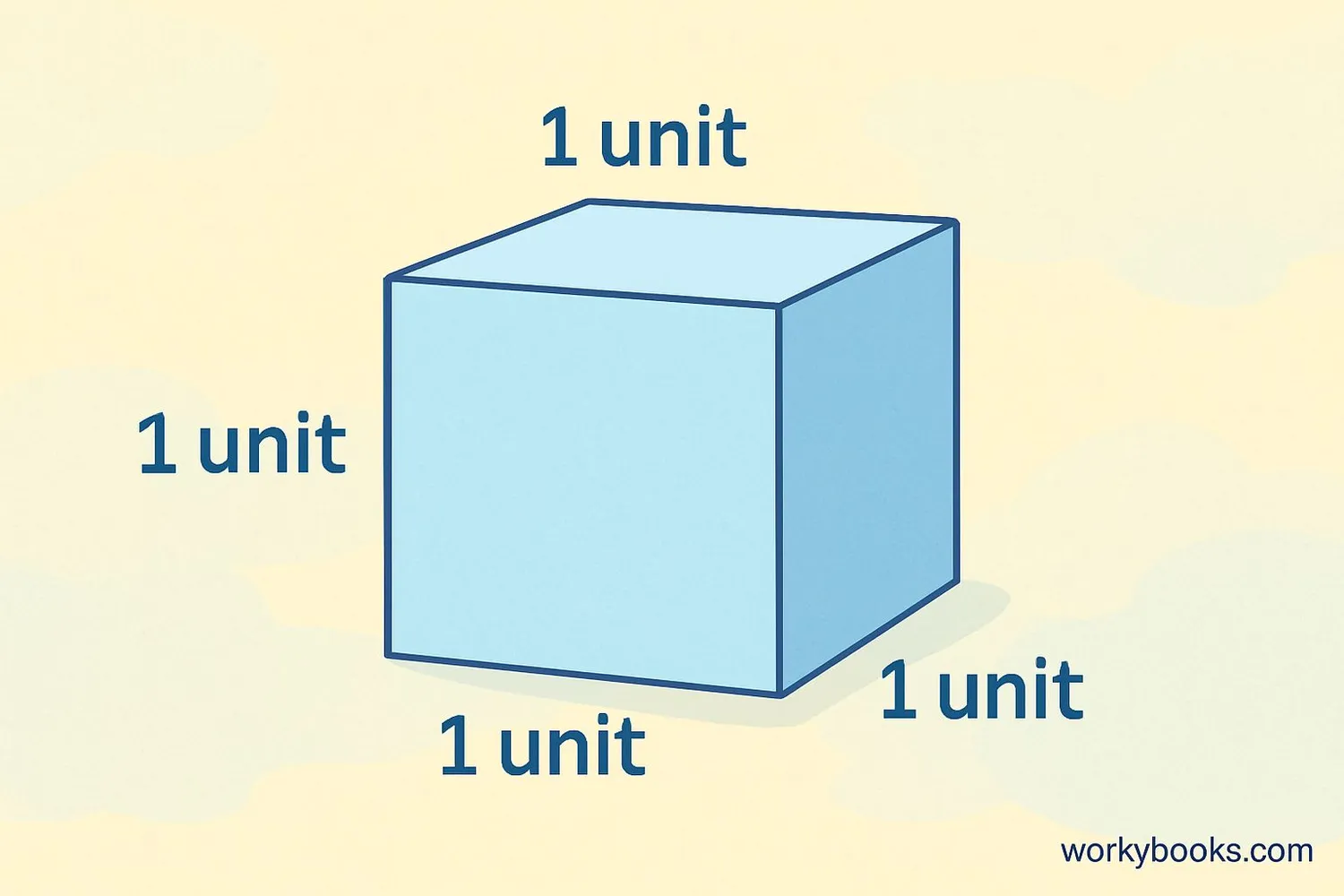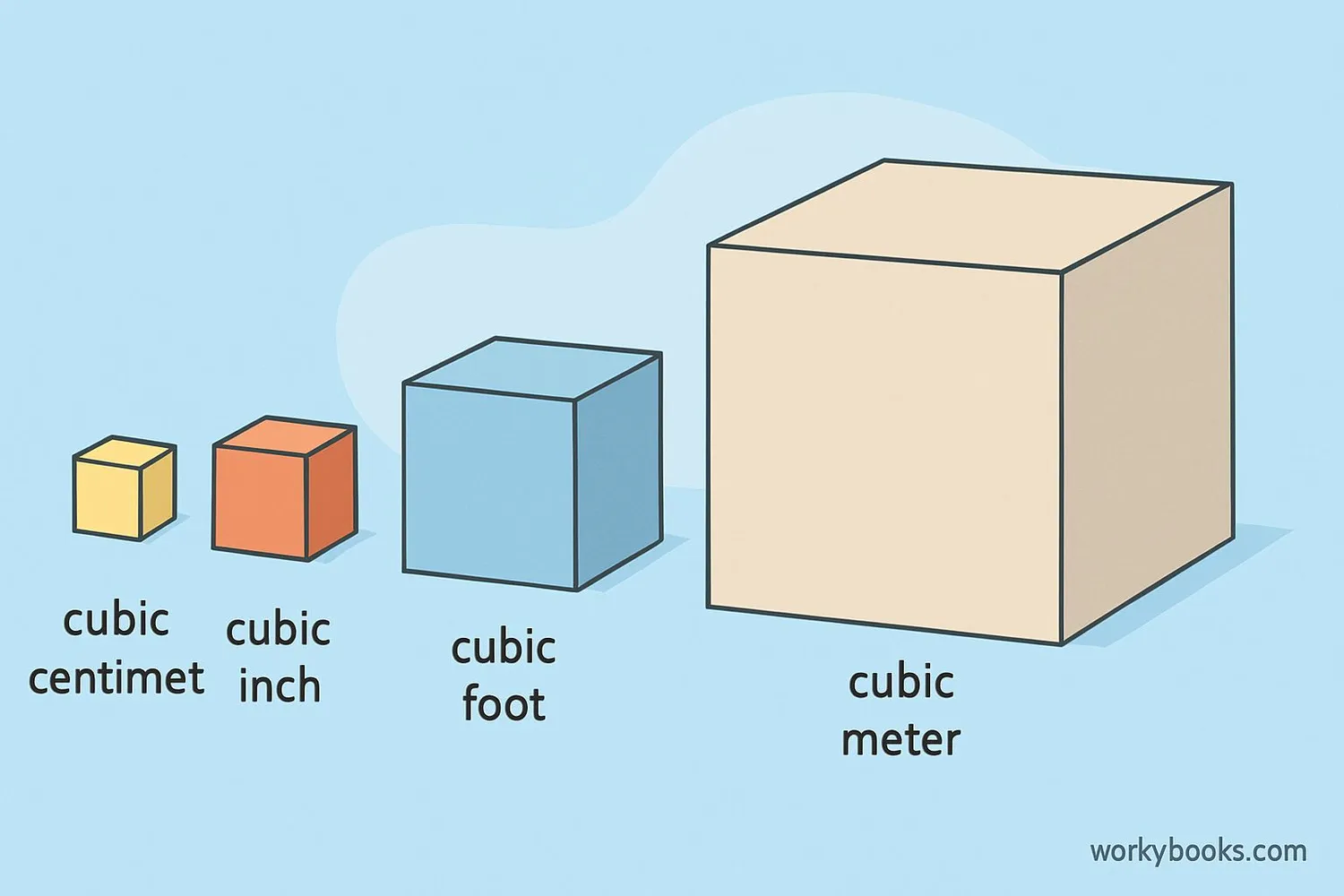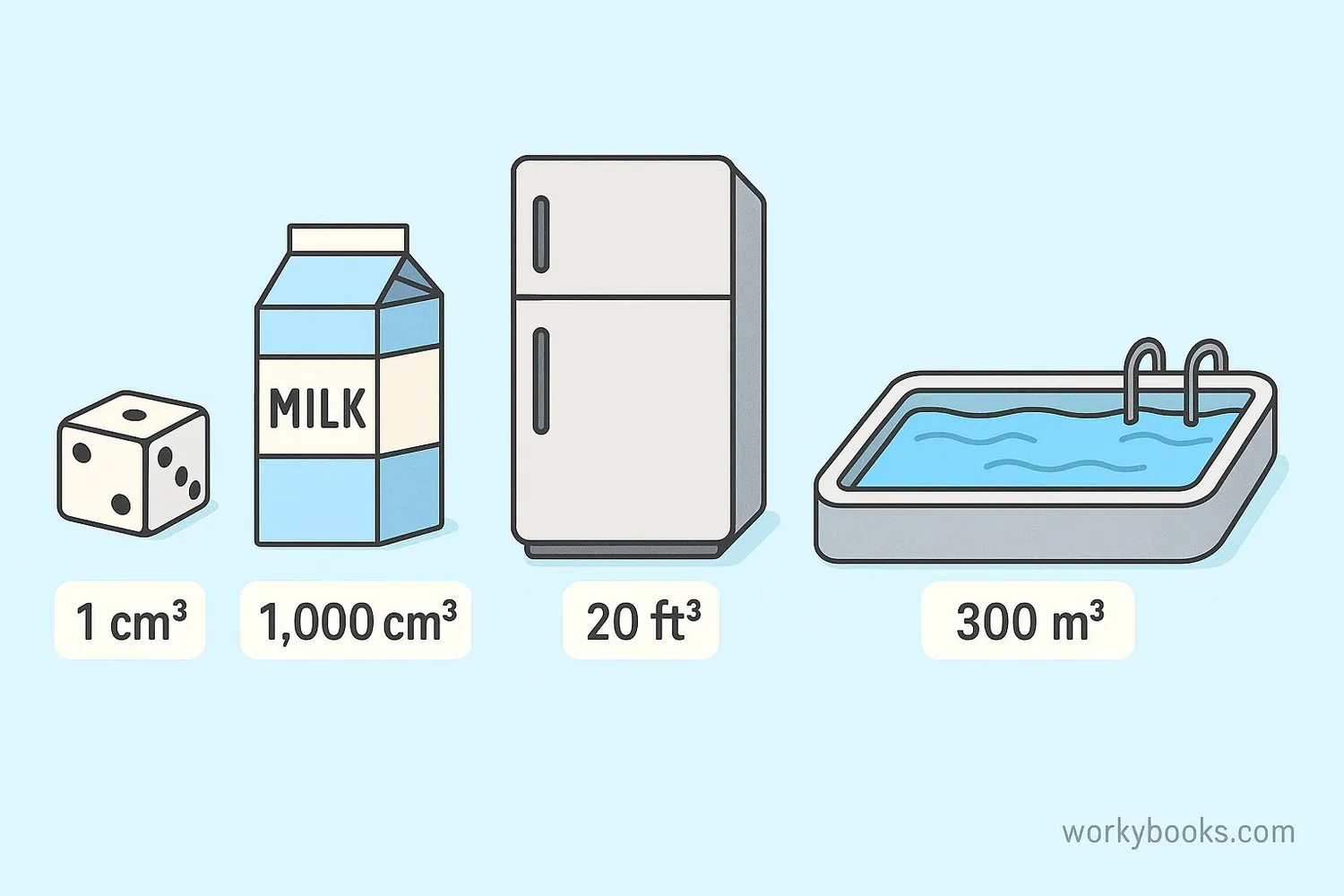Cubic Units: Measuring Volume - Definition, Examples, Quiz, FAQ, Trivia
Learn about cubic units and how we measure volume with easy explanations and practice activities
What are Cubic Units?

A cubic unit is a special unit we use to measure how much space something takes up inside. It's like a little box that is:
• 1 unit long
• 1 unit wide
• 1 unit high
Imagine a perfect cube-shaped block. That's a cubic unit! We use these cubic units to fill up shapes and count how many fit inside. This helps us measure volume - which is how much space something takes up in three dimensions.
Cubic units can be any size depending on what we're measuring. We can have tiny cubic units for small objects or big cubic units for large spaces.
Key Concept
Volume = How much space something takes up inside. We measure volume in cubic units.
How Cubic Units Measure Volume

To measure volume with cubic units:
1. Imagine filling the shape with small cubes
2. Count how many cubes fit inside without gaps
3. The total number of cubes is the volume
For rectangular prisms (box-shaped objects), we can calculate volume with a formula:
Volume Formula
Multiply the three dimensions to find how many cubic units fit inside.
Step 1: Multiply the length and width: 3 × 2 = 6
Step 2: Multiply by the height: 6 × 2 = 12
Step 3: The volume is 12 cubic units
This means 12 of our cubic units would fit perfectly inside this box!
Remember
Volume is always measured in cubic units. We write it as unit³, like cm³ for cubic centimeters.
Types of Cubic Units

Cubic units come in different sizes depending on what we're measuring. Here are some common types:
| Cubic Unit | Abbreviation | What It Measures |
|---|---|---|
| Cubic Centimeter | cm³ | Small objects (like dice or blocks) |
| Cubic Inch | in³ | Small to medium objects (like phones or books) |
| Cubic Foot | ft³ | Medium to large objects (like refrigerators or boxes) |
| Cubic Meter | m³ | Very large objects (like rooms or swimming pools) |
Conversion Tip
1 cubic foot = 1,728 cubic inches. That's because 12 inches × 12 inches × 12 inches = 1,728 cubic inches!
Real-World Examples

Let's see how cubic units are used in everyday life:
Example 1: A standard die (the kind you use in board games) is about 1 cubic centimeter. We write this as 1 cm³.
Example 2: A small milk carton might hold 1,000 cubic centimeters of milk. That's the same as 1 liter.
Example 3: A refrigerator might have a volume of about 20 cubic feet. That means 20 cubes, each 1 foot on every side, would fit inside.
Example 4: A swimming pool might hold 300 cubic meters of water. That's 300 cubes, each 1 meter on every side!
Next time you see a box, try to estimate how many cubic units might fit inside. Is it a few cubic inches? Many cubic feet?
Remember
Volume tells us how much space is inside a 3D object. Area measures the surface, while volume measures the space inside.
Volume Practice Quiz
Test your understanding of cubic units with this 5-question quiz. Choose the correct answer for each question.
Frequently Asked Questions
Here are answers to common questions about cubic units and volume:
Volume Trivia
Discover interesting facts about volume and measurement:
Ancient Measurements
The ancient Egyptians used cubic units to measure the volume of grain stored in their granaries. They had special officials called "grain measurers" who used cubic cubits (about 52 cm per side).
Water Volume
1 cubic centimeter of water has a mass of exactly 1 gram. That means a 10 cm × 10 cm × 10 cm cube of water (1 liter) would weigh exactly 1 kilogram!
Largest Volume
The largest volume ever measured is the observable universe, estimated at 4 × 10⁸⁰ cubic meters. That's a 4 followed by 80 zeros - more cubic meters than there are grains of sand on Earth!
Smallest Volume
Scientists can measure volumes as small as 1 cubic nanometer. That's one billionth of a meter on each side! At this scale, scientists study individual atoms and molecules.


